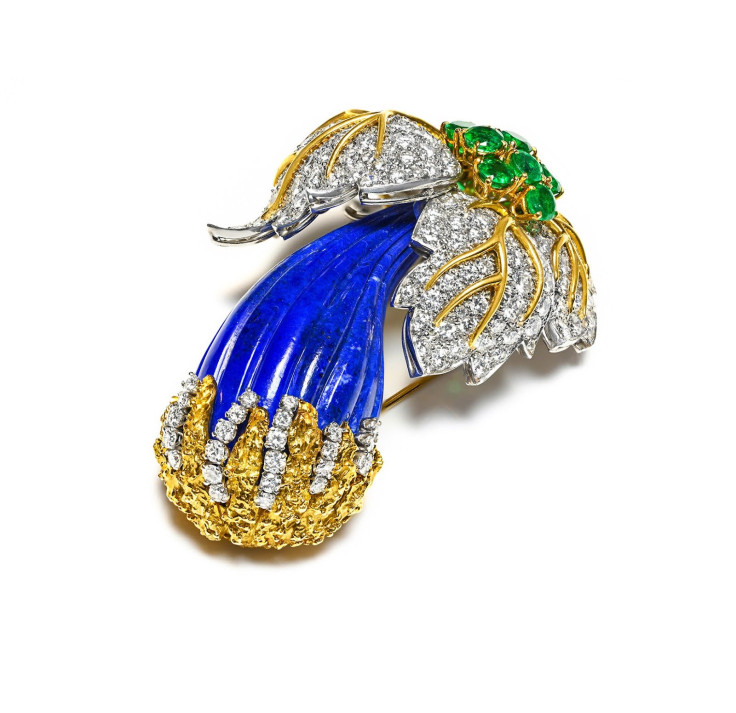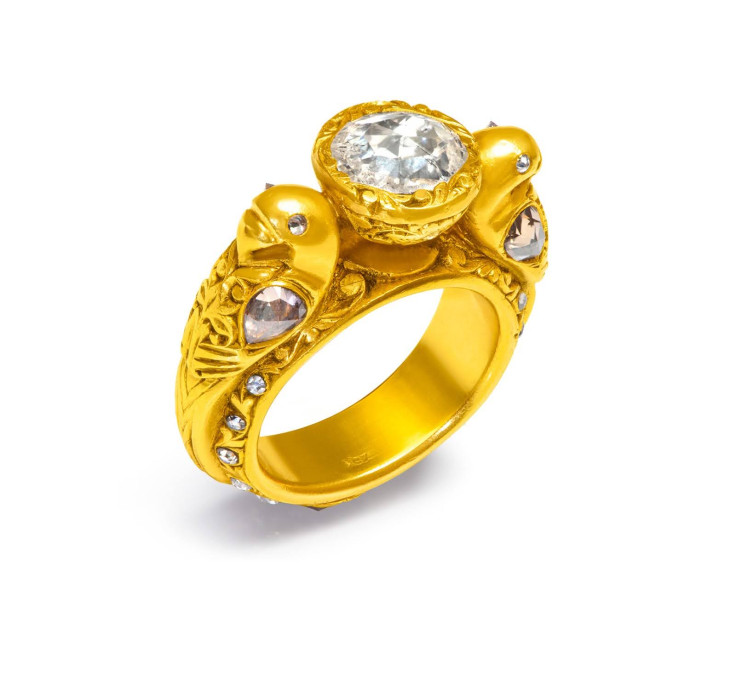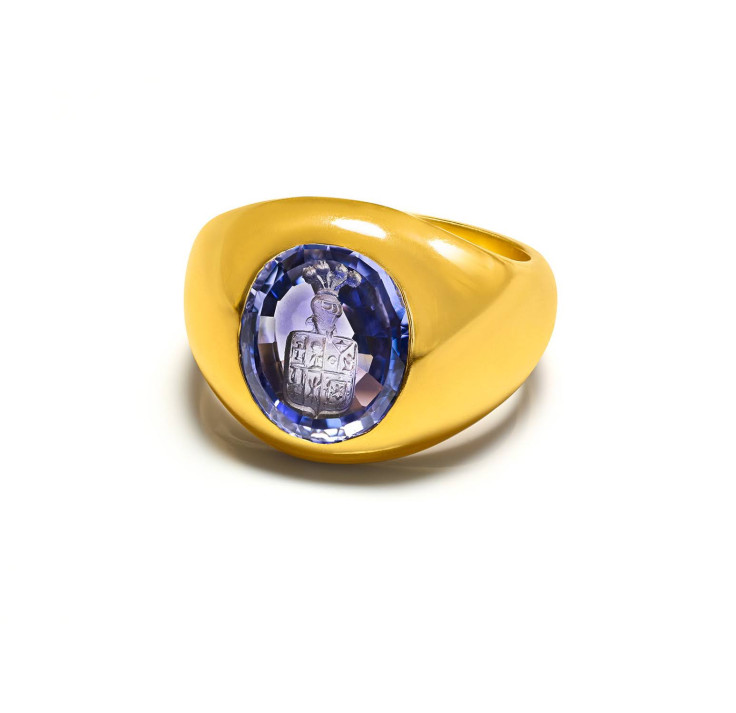
Across the luxury sector, a quiet transformation is transforming how the rarest objects of human craft are found, bought, and preserved. High jewelry - antique pieces that embody centuries of design and technical mastery - has emerged as both a cultural artifact and financial safe haven. For more than fifty years, DSF Antique Jewelry has navigated this shifting landscape, evolving from a family passion in New York to a trusted global presence that blends heritage with digital innovation.
The Allure of Timeless Value
High jewelry - those rare, meticulously crafted pieces that exist somewhere between art and capital - has become an increasingly resilient corner of the luxury economy. Despite global slowdowns in fashion and accessories, the segment is projected to grow at an annual rate approaching 7–9 percent through 2030, outpacing the broader luxury market. Industry analysts attribute this to what they call the "wearable capital" effect: for the world's wealthiest, a one-of-a-kind diamond brooch or Edwardian cufflink is not just ornament, but a store of value, often as enduring as real estate or fine art.
DSF Antique Jewelry operates squarely in this arena. Founded over fifty years ago in New York, the company has served more than 15,000 clients across the United States, Canada, and Europe. Its catalog reads like a survey of decorative genius: signed vintage creations from Cartier, Tiffany & Co., Van Cleef & Arpels, alongside antique gold stickpins and cufflinks that might have adorned the waistcoats of nineteenth-century statesmen. These are not merely decorative trinkets; they are cultural artifacts whose rarity and provenance confer both emotional and financial weight.

Bridging Heritage and Digital Innovation
For decades, the trade in such pieces followed a predictable rhythm: private showings, discreet auctions, transactions sealed by a handshake and a nod. But in the last decade, the market has shifted. Digital commerce, once viewed with skepticism by collectors of multi-million-dollar jewels, has become indispensable. DSF's leadership grasped this change early.
Under the guidance of Dorian Filip, a native of Eastern Europe who joined forces with the company's New York founder, DSF embarked on a digital transformation without surrendering the quiet discretion that defines high jewelry. "We wanted to bring the intimacy of the salon to the global stage," Filip explains. He spearheaded the launch of a website rich in high-resolution photography and narrative detail, where every piece carries a story of its maker and era. The site's "Invest" section reframes jewelry as a long-term asset class, while live shopping and online consultations give distant clients a personal experience once limited to in-person meetings.
Filip's challenge was formidable: persuading long-time collectors that six-figure transactions could be conducted securely online. "Convincing someone to buy a Victorian diamond necklace through a screen is not a simple task," he admits. His solution—an emphasis on transparency, meticulous documentation of provenance, and concierge-level service—has paid off. Annual revenue has grown roughly 15 percent, and the firm now ranks among the most trusted online destinations for antique high jewelry.
A Market in Flux
The broader industry context shows the urgency of DSF's digital pivot. Global jewelry sales are expected to surpass $340 billion by 2032, with the high-jewelry niche - variously estimated at between $24 billion and $180 billion depending on methodology - expanding steadily. Asia remains the largest market, but growth in the United States, Canada, and Europe remains strong, and new wealth in India and the Middle East promises future demand.
Consumers themselves are changing. Younger collectors, often in their forties and fifties, demand both impeccable provenance and a compelling narrative. They are as interested in the story of a Victorian brooch as in the carat weight of its diamonds. Increasingly, they also expect brands to offer ethical sourcing and digital verification, from blockchain-backed certificates to lab-grown alternatives. DSF's focus on antique and vintage pieces, a form of "circular luxury" that requires no new mining, places it squarely in the path of these evolving expectations.

Legacy with an Eye on Tomorrow
DSF remains family-owned, its ethos rooted in trust and integrity. What began as a founder's personal hobby has become a global enterprise without losing the intimacy that first attracted collectors. "We see ourselves as custodians of history," Filip says. "Every piece we sell carries the memory of a time and a craft we are determined to preserve."
The company's strategic horizon is clear: in the short term, increase brand awareness among high-net-worth individuals seeking unique and timeless pieces; in the medium term, strengthen its online presence through advanced search optimization and authoritative media features; and in the long term, establish DSF as a global reference point for fine and high antique jewelry. The ambition is not simply to sell jewels, but to define the standards by which they are valued and preserved.
The Weight of Time
High jewelry, at its best, compresses centuries into something that can be held in the palm of a hand. DSF's success lies in recognizing that these categories, art, history, investment, are not separate but intertwined. By fusing heritage with digital innovation, Dorian Filip and his team have positioned the company not merely as a merchant of rare objects, but as a steward of cultural memory.
In a market where trends come and go, DSF Antique Jewelry offers something far less ephemeral: the enduring weight of time itself.
DSF Antique Jewelry: A Renowned Leader in Rare and Fine Jewelry
Byline: Mae Cornes
Photo Courtesy of: DSF Antique Jewelry
Across the luxury sector, a quiet transformation is transforming how the rarest objects of human craft are found, bought, and preserved. High jewelry - antique pieces that embody centuries of design and technical mastery - has emerged as both a cultural artifact and financial safe haven. For more than fifty years, DSF Antique Jewelry has navigated this shifting landscape, evolving from a family passion in New York to a trusted global presence that blends heritage with digital innovation.
The Allure of Timeless Value
High jewelry - those rare, meticulously crafted pieces that exist somewhere between art and capital - has become an increasingly resilient corner of the luxury economy. Despite global slowdowns in fashion and accessories, the segment is projected to grow at an annual rate approaching 7–9 percent through 2030, outpacing the broader luxury market. Industry analysts attribute this to what they call the "wearable capital" effect: for the world's wealthiest, a one-of-a-kind diamond brooch or Edwardian cufflink is not just ornament, but a store of value, often as enduring as real estate or fine art.
DSF Antique Jewelry operates squarely in this arena. Founded over fifty years ago in New York, the company has served more than 15,000 clients across the United States, Canada, and Europe. Its catalog reads like a survey of decorative genius: signed vintage creations from Cartier, Tiffany & Co., Van Cleef & Arpels, alongside antique gold stickpins and cufflinks that might have adorned the waistcoats of nineteenth-century statesmen. These are not merely decorative trinkets; they are cultural artifacts whose rarity and provenance confer both emotional and financial weight.
Bridging Heritage and Digital Innovation
For decades, the trade in such pieces followed a predictable rhythm: private showings, discreet auctions, transactions sealed by a handshake and a nod. But in the last decade, the market has shifted. Digital commerce, once viewed with skepticism by collectors of multi-million-dollar jewels, has become indispensable. DSF's leadership grasped this change early.
Under the guidance of Dorian Filip, a native of Eastern Europe who joined forces with the company's New York founder, DSF embarked on a digital transformation without surrendering the quiet discretion that defines high jewelry. "We wanted to bring the intimacy of the salon to the global stage," Filip explains. He spearheaded the launch of a website rich in high-resolution photography and narrative detail, where every piece carries a story of its maker and era. The site's "Invest" section reframes jewelry as a long-term asset class, while live shopping and online consultations give distant clients a personal experience once limited to in-person meetings.
Filip's challenge was formidable: persuading long-time collectors that six-figure transactions could be conducted securely online. "Convincing someone to buy a Victorian diamond necklace through a screen is not a simple task," he admits. His solution—an emphasis on transparency, meticulous documentation of provenance, and concierge-level service—has paid off. Annual revenue has grown roughly 15 percent, and the firm now ranks among the most trusted online destinations for antique high jewelry.
A Market in Flux
The broader industry context shows the urgency of DSF's digital pivot. Global jewelry sales are expected to surpass $340 billion by 2032, with the high-jewelry niche - variously estimated at between $24 billion and $180 billion depending on methodology - expanding steadily. Asia remains the largest market, but growth in the United States, Canada, and Europe remains strong, and new wealth in India and the Middle East promises future demand.
Consumers themselves are changing. Younger collectors, often in their forties and fifties, demand both impeccable provenance and a compelling narrative. They are as interested in the story of a Victorian brooch as in the carat weight of its diamonds. Increasingly, they also expect brands to offer ethical sourcing and digital verification, from blockchain-backed certificates to lab-grown alternatives. DSF's focus on antique and vintage pieces, a form of "circular luxury" that requires no new mining, places it squarely in the path of these evolving expectations.
Legacy with an Eye on Tomorrow
DSF remains family-owned, its ethos rooted in trust and integrity. What began as a founder's personal hobby has become a global enterprise without losing the intimacy that first attracted collectors. "We see ourselves as custodians of history," Filip says. "Every piece we sell carries the memory of a time and a craft we are determined to preserve."
The company's strategic horizon is clear: in the short term, increase brand awareness among high-net-worth individuals seeking unique and timeless pieces; in the medium term, strengthen its online presence through advanced search optimization and authoritative media features; and in the long term, establish DSF as a global reference point for fine and high antique jewelry. The ambition is not simply to sell jewels, but to define the standards by which they are valued and preserved.
The Weight of Time
High jewelry, at its best, compresses centuries into something that can be held in the palm of a hand. DSF's success lies in recognizing that these categories, art, history, investment, are not separate but intertwined. By fusing heritage with digital innovation, Dorian Filip and his team have positioned the company not merely as a merchant of rare objects, but as a steward of cultural memory.
In a market where trends come and go, DSF Antique Jewelry offers something far less ephemeral: the enduring weight of time itself.







